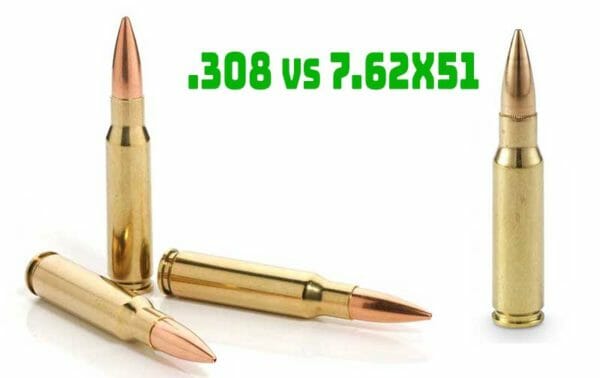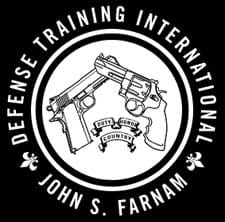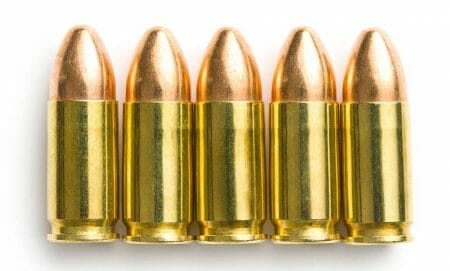Opinion

Ft Collins, CO –-(Ammoland.com)- As most of us know, 5.56×45 is the “militarized” version of the civilian 223 Rem varmint cartridge, developed by Remington in 1957.
Military-rifle chamber dimensions for the 5.56×45 cartridge are more generous than the civilian 223 (SAAMI-spec), although both rounds will chamber and fire in NATO-spec military rifles.
SAAMI stands for “Sporting Arms and Ammunition Manufacturing Institute.” SAAMI was instituted in 1913 in order to establish and exchange consistent small-arms technical information between American factories producing military arms and ammunition.
Today, SAAMI continues to dictate chamber dimensions and pressure standards for all commercial calibers, and all gun and ammunition manufacturers dutifully comply.
Commercial rifles in 223 Rem caliber, intended for non-serious purposes, mostly come with SAAMI-spec chambers, which are tighter than NATO-spec chambers, as noted above.
As a general rule, when a barrel is stamped “223 Rem,” it has a SAAMI-spec chamber, and as noted above, it is intended only for non-serious purposes. Tight chambers boost accuracy but have no place on high-capacity, military rifles.
Conversely, when the barrel is stamped “5.56×45,” it has a looser NATO chamber, with adequate leade, or freebore (this is a short section of bore just ahead of the chamber that is not rifled, allowing the bullet to jump off the case before it engages the rifling). The combination of generous chamber dimensions and adequate leade is intended to prevent stuck cases, broken extractors, and pressure-spikes in autoloading rifles, particularly when they get hot.
Of course, loose chambers yield slightly less inherent accuracy than tight chambers. However, for serious purposes, this accuracy compromise is insignificant
Accordingly, I always recommend a genuine “NATO-spec” barrel for all 5.56×45 ARs and other autoloading rifles that are intended for serious purposes, and I specify it on all “Farnam Signature” Rifles.
308 and 7.62×51
308 caliber was introduced into the American commercial market by Winchester in 1952.
Two years later, DOD militarized it, designating their version “7.62×51 NATO,” and as a result of heavy persuasion on the part of DOD, it went on to be adopted my most NATO nations and remained the “standard” through the 1960s and 1970s.
With additional heavy persuasion on the part of DOD, the 7.62×51 was superseded within NATO in the 1970s by the 5.56×45 and remained there to this day.
We are told the decision has now been made at DOD to supersede the 5.56×45 with Remington’s 6.80×43 (6.8 SPC, introduced by Remington in 2003). How long this conversion will take, and whether or not our NATO allies will go along, once more, is anyone’s guess?
One important note:
While the military 5.56×45 chamber is looser than the commercial (SAAMI) 223 Remington chamber, as noted above, the exact opposite is the case with the 7.62×51/308 Winchester caliber!
Military chamber dimensions for 7.62×51 NATO are actually tighter than the those for the original “308″ chamber dimensions, and I’m not sure I understand why this is so.
In any event, this anomaly has become an issue for manufacturers of military-style rifles in this caliber, as you might imagine.
When you buy a FAL, RA/XCR/M, SCAR, POF Revolution, et al and intend it for “serious purposes,” you want a “308″ chamber (with adequate leade), not the tighter 7.62×51 NATO chamber, particularly when you plan on running a wide variety of ammunition through it.
For one, I want my serious rifle to chamber and shoot anything! When a manufacturer cautions, “use only this brand of ammunition,” I have no interest in owning that rifle, as I have no idea of what ammunition I may be one day forced to use.
With my FS 7.62×51 rifle, I’ve been thus compelled to specify “308″ barrels and chambers.
Once again. “serious” autoloading rifles have to be able to chamber and shoot any kind/brand of ammunition you can find, without stammering, without breaking extractors, without the extractor pulling-through the case-rim, and without the extractor ripping heads off of cases.
It’s a serious issue, and your life may one day depend on your rifle running reliably, despite “field conditions,” continuous lack of maintenance, and funky ammunition.
/John

About John Farnam & Defense Training International, Inc
As a defensive weapons and tactics instructor John Farnam will urge you, based on your own beliefs, to make up your mind in advance as to what you would do when faced with an imminent lethal threat. You should, of course, also decide what preparations you should make in advance if any. Defense Training International wants to make sure that their students fully understand the physical, legal, psychological, and societal consequences of their actions or in-actions.
It is our duty to make you aware of certain unpleasant physical realities intrinsic to the Planet Earth. Mr. Farnam is happy to be your counselor and advisor. Visit: www.defense-training.com



What is the obsession with labeling AR’s “high capacity military rifles”. It comes off as very uneducated for such a good article.
The 5.56 Nato rounds should only be fired in a firearm marked “5.56”, but 223 Remington rounds can be fired in both guns marked 5.56 and/or 223. The problem is that some manufacturers of AR-type firearms aren’t consistent with their marking of their barrels. The .308, both military (7.62) and commercial (.308) are completely interchangeable for ANY firearm marked either .308 or 7.62 and one may perform better than the other in a specific rifle, but it is NOT dangerous to the shooter to interchange the ammo in either marked rifle.
Should desire to shoot 556 in a barrel chambered for 223 just run a Wylde finishing reamer into the 223 chamber then you can safely shoot both 223 & 556.
Please take note that milspec no longer is a guarantee of right thinking. This article clearly shows on head scratcher situation created by milspec. The lessons are clear for those of you who are preparing for dark times (again). When selecting ammunition families for you critical service firearms the rule used to be milspec because that is what was available in large numbers. In include reloadable Warsaw Pact families of ammo in that category. Back during the Obama Ammo Drought those who had exotic calibers had lots of wall hangers. Those who had common ammunition families and stockpiled components and… Read more »
Shot both 308 an 7.62×51 in several different 308 I have an even reloaded the same for years,an never had no problems.
This is what happens when you let someone who doesn’t know what he’s talking about write an article. 7.62 chambers have greater head space than .308. It can be dangerous to fire thin walled .308 in a maximum but within an in spec. 7.62 rifle. 7.62 cartridges have thicker walls to allow them to stretch without having a case head separation that may occur with .308 cartridges.
.308: go – 1.630, nogo – 1.634, field – 1.638
7.62: go – 1.6355, nogo – 1.6405, field – 1.6455
SAMMI cartridge length: .308 – 1.634/1.627, 7.62 – 1.634 -.006
Well I’m making the jump from 7.62×39 so this for me is helping me choose.
The 556 round was not developed by FN until the late 70’s which means there were many AR’s marked 223 & in combat prior to that date. So were these non serious rounds for prairie dogs? I think not as many a soldier bet their life on them!
Why s it that the 308 no go headspace gauge will close on 7.62 chambered rifles if the chambers are tighter than 308. I was always under the impression that the 7.62 was slightly looser, like the 5.56. And because of this you had to be careful firing 308 with thin brass. The 7.62 x 51 uses thick brass and because of this has no issues with the larger chamber.
I have been shopping for a Springfield socom chambered in ,308 caliper. Does this rifle come with a .308 chamber or would I have to order it that way specifically?